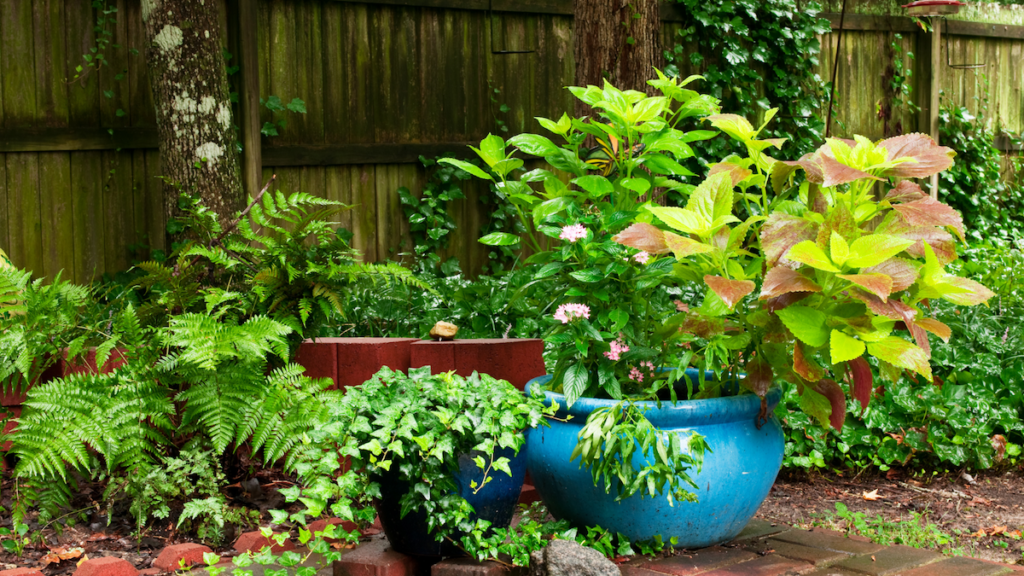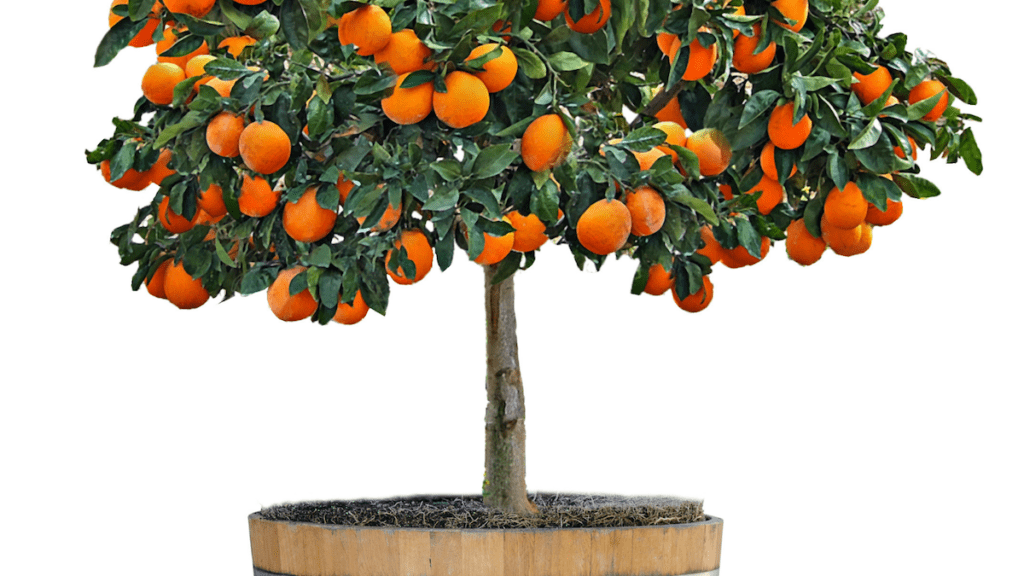6 Reasons to Try Container Gardening
Planting in containers is a great way to have a lot of flexibility in your gardens.
- You can move containers around until you find the perfect sun exposure for your plants.
- You can garden even if you do not have access to a landscape.
- You can easily change out your color palette or seasonal plants with minimal work.
- You can easily add additional color to your landscapes, porches, decks, etc… by choosing vibrantly-hued pots.
- You can grow more temperature sensitive plants because you can move plants inside to protect them.
- You can create stunning displays WHEREVER you want them!

Tips for Successful Container Gardening
Potting: The general rule when you are potting a single plant from a nursery transplant pot, is to choose a container that is about twice the diameter of the nursery pot. If you have a big decorative pot that you eventually want the plant to fill out, you can temporarily use a plastic pot and drop it down in there (or invert another plastic pot to set it on if you need it higher) until it grows to where the decorative pot will be perfect for the final mature size of your plant.
If you are making a full hanging basket, or desire an annual display that is packed with color or a filler, thriller and spiller, you won’t be following this guideline. In general, a potted display like this, you need about 5-6 plants that are around 4”, to fill up a 24” container. This is all GENERAL advice; everyone has their own preferences, and you really need to know your plants as well (mature size, root size, etc…)
If you are reusing a pot for fresh plants, take time to clean them up a bit before repotting. Rinse your used pots with a solution of 20 parts water to 1 part bleach before filling up your containers with fresh soil.
Offer topshelf potting soil and look at the ingredient list for things like mycorrhizal fungi, bat guano, earthworm castings, forest humus, etc… You can’t necessarily buy good potting soil on the cheap. Keep in mind, when it comes to this, you get what you pay for. Do not use garden soil in pots.

Because you will be watering plants in containers more than inground plants, you will be feeding them more often too. Liquid fertilizers are great for this. You can offer new transplants some diluted water soluble fertilizer at planting for a nice boost. Annuals are especially heavy feeders, so liquid feeding every other week during the growing period makes them perform like gangbusters. When plants are in the vegetative growth (not blooming or fruiting) you can offer them a higher nitrogen water soluble fertilizer. Once they start to bud and bloom or fruit, offer them one higher in phosphorus. FoxFarm has two options that we really love, Grow Big and Big Bloom.
Plants in pots and containers will need more water than those planted in the ground. However, you should make sure to learn how to really test for moisture in your plant to know if it truly needs watering or not. The top of potting soil can often look dry when just an inch or so below the soil may actually be moist. See watering tips here.

~The Happy Gardener, Lisa Mulroy


I have 2 new railing boxes that I am trying to determine what to plant in them. They will get some morning sun but by 10 am shade the rest if the day.
I have 2 pots of Geraniums, 3 in each pot. I plan on separating them and using some if them in the new planters. Will they thrive with so little direct sun? If yes, what other plants would look good in them?
Hi Sheila,
Coleus, Caladium, Torenia come to mind for some good options, but I am attaching the link to our shade plant handout so that you can see some more options. Shade/Part Shade plant handout
Can you please recommend a good soil for new, bare root, shrub rose bushes that will be planted in a container? I cannot get a specific, brand name, recommendation from Google.
Hi Rose,
We love the FoxFarm brand Happy Frog potting soil. It is high quality and full of micronutrients and active soil microbes. This would be a great soil for your roses. Make sure to check out our info from our rose seminar here.
I would like to plant an agarita plant in a large pot. Should I use a cactus type soil mix? Do you carry agarita plants?
We do usually carry agarita, but I suggest calling ahead before visiting to make sure they are still in stock. Supply changes daily. You don’t necessarily have to use a cactus soil mix. We actually like FoxFarms Happy Frog potting soil. Make sure you have drainage in the pot and also add plenty of gravel to the bottom of the pot.